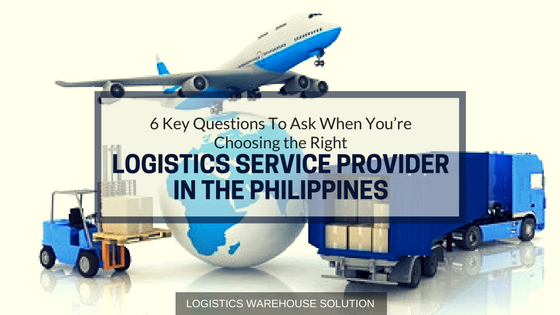 |
| Image source: linkedin.com |
IoT or Internet of Things has been a trend in the logistics industry. It is a system of interrelated computing devices, mechanical and digital machines, animals or people that are provided with unique identifiers and the ability to transfer over a network. The concept of IoT, as detailed by Forbes, is basically connecting devices with a switch to the Internet or to each other. The devices range from cell phones to washing machines. The relationship could be between people-people, people-things, and things-things.
With the rise of IoT, logistics companies in the Philippines should get on the bandwagon. Here are 4 reasons why:
Supply chain visibility
Visibility in terms of logistics means that the items to be delivered are being monitored from the manufacturer to the final destination. Since the logistics industry has many parts, having deeper understanding of each process is a must. With the upswing of IoT, you will be updated and informed with a precise and fast data of the items’ whereabouts. IoT will boost the efficiency of the process by using cloud-based GPS and Radio Frequency Identification. These technologies provide identity, location and other tracking information. By accessing data amassed by these devices, automation of delivery can now be made possible. The time of arrival, weather conditions, traffic conditions are just some of its many convenient features.
Enhanced Customer Satisfaction
Estimated time of arrival can now be sent thru customer service representatives. Customer’s needs are now addressed properly due to the accurate and real-time delivery of information. There is an increase in systems’ usefulness which directly affects the overall efficiency of the supply chain process. An enhanced customer satisfaction is an increase in sales, market share and overall company growth.
Inventory Management
Cloud-based inventory systems are able to track items in real-time by scanning them in and out of stock locations. The items’ information can now be stored in the digital inventory system. With the incorporation of IoT into your inventory management, you will be able to pin-point each and every item’s location. This will greatly decrease the number of lost or stolen products and increase management of stock shortages, as detailed by Clear Spider.
Cost Reduction
When logistics companies in the Philippines and beyond, fail to comply with regulatory agencies, penalties could be charged. Compliance with the government’s policies is one of the top priorities when it comes to logistics. With the aid of IoT, increase in accountability and compliance will be achieved. Another aspect in cost reduction includes saving in some of the supply chain’s expenses. With GPS, congested areas can now be easily and swiftly identified. Avoiding areas affected by traffic can reduce fuel costs.
Here are some ways to increase your logistics company’s efficiency and accountability. As stated by Business Insider, many industries and excited customers have pegged the Internet of Things as the next ‘Next Industrial Revolution’ or the ‘Next Internet’. IoT is logistics’ biggest innovation yet. Is your logistics company here in the Philippines ready to join the journey?
Upon hearing the benefits, why not entertain yourself with little facts about air freight.





















